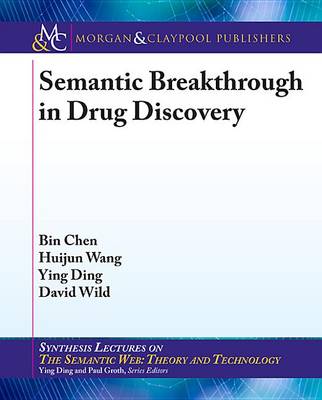Synthesis Lectures on the Semantic Web: Theory and Technology
2 total works
The world of scholarship is changing rapidly. Increasing demands on scholars, the growing size and complexity of questions and problems to be addressed, and advances in sophistication of data collection, analysis, and presentation require new approaches to scholarship. A ubiquitous, open information infrastructure for scholarship, consisting of linked open data, open-source software tools, and a community committed to sustainability are emerging to meet the needs of scholars today.
This book provides an introduction to VIVO, http://vivoweb.org/, a tool for representing information about research and researchers -- their scholarly works, research interests, and organizational relationships. VIVO provides an expressive ontology, tools for managing the ontology, and a platform for using the ontology to create and manage linked open data for scholarship and discovery. Begun as a project at Cornell and further developed by an NIH funded consortium, VIVO is now being established as an open-source project with community participation from around the world. By the end of 2012, over 20 countries and 50 organizations will provide information in VIVO format on more than one million researchers and research staff, including publications, research resources, events, funding, courses taught, and other scholarly activity.
The rapid growth of VIVO and of VIVO-compatible data sources speaks to the fundamental need to transform scholarship for the 21st century.
This book provides an introduction to VIVO, http://vivoweb.org/, a tool for representing information about research and researchers -- their scholarly works, research interests, and organizational relationships. VIVO provides an expressive ontology, tools for managing the ontology, and a platform for using the ontology to create and manage linked open data for scholarship and discovery. Begun as a project at Cornell and further developed by an NIH funded consortium, VIVO is now being established as an open-source project with community participation from around the world. By the end of 2012, over 20 countries and 50 organizations will provide information in VIVO format on more than one million researchers and research staff, including publications, research resources, events, funding, courses taught, and other scholarly activity.
The rapid growth of VIVO and of VIVO-compatible data sources speaks to the fundamental need to transform scholarship for the 21st century.
Semantic Breakthrough in Drug Discovery
by Bin Chen, Huijun Wang, Ying Ding, and David Wild
Published 1 October 2014
The current drug development paradigm---sometimes expressed as, ``One disease, one target, one drug''---is under question, as relatively few drugs have reached the market in the last two decades. Meanwhile, the research focus of drug discovery is being placed on the study of drug action on biological systems as a whole, rather than on individual components of such systems. The vast amount of biological information about genes and proteins and their modulation by small molecules is pushing drug discovery to its next critical steps, involving the integration of chemical knowledge with these biological databases. Systematic integration of these heterogeneous datasets and the provision of algorithms to mine the integrated datasets would enable investigation of the complex mechanisms of drug action; however, traditional approaches face challenges in the representation and integration of multi-scale datasets, and in the discovery of underlying knowledge in the integrated datasets. The Semantic Web, envisioned to enable machines to understand and respond to complex human requests and to retrieve relevant, yet distributed, data, has the potential to trigger system-level chemical-biological innovations. Chem2Bio2RDF is presented as an example of utilizing Semantic Web technologies to enable intelligent analyses for drug discovery.

